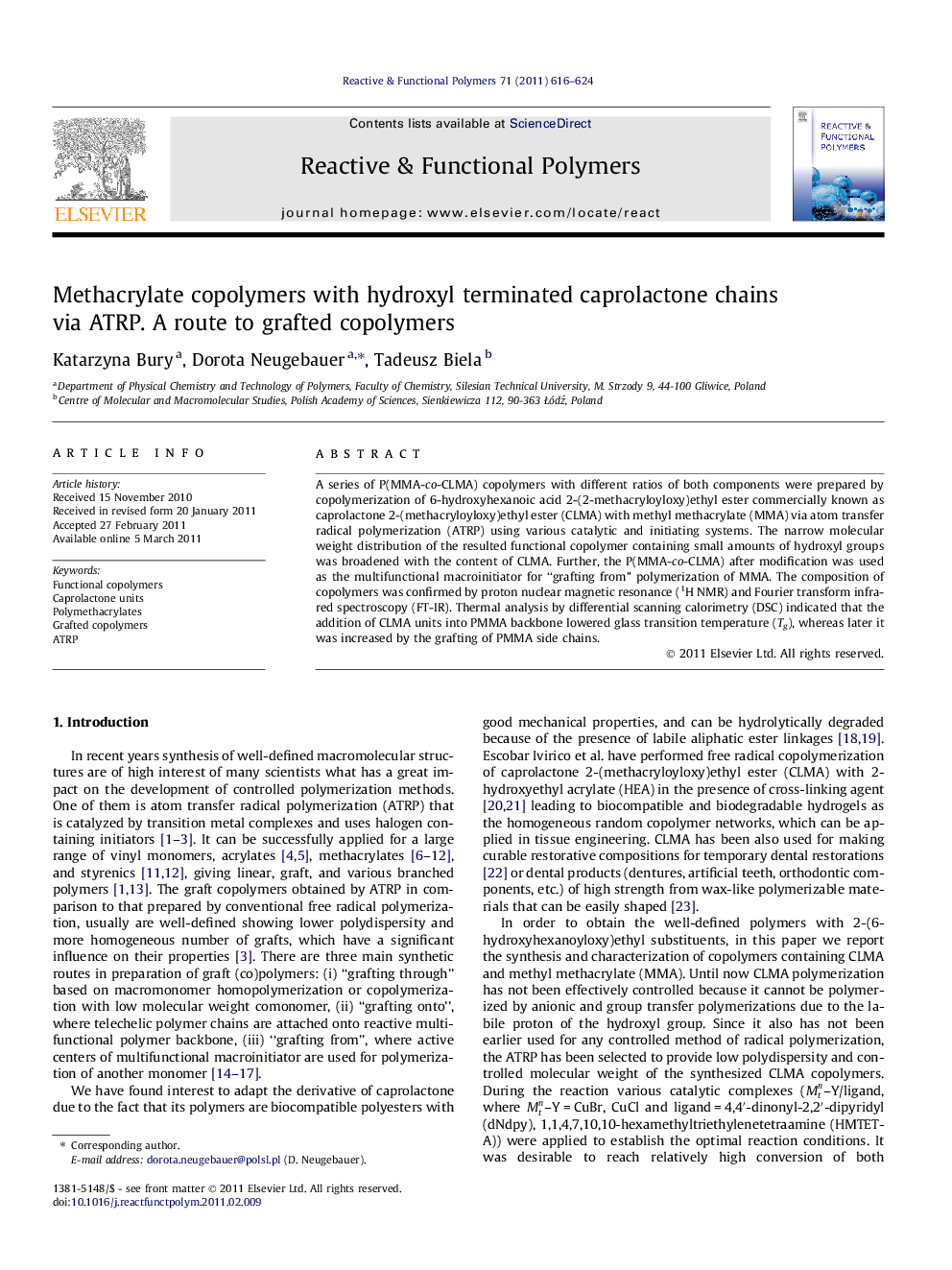| Article ID | Journal | Published Year | Pages | File Type |
|---|---|---|---|---|
| 5210318 | Reactive and Functional Polymers | 2011 | 9 Pages |
Abstract
A series of P(MMA-co-CLMA) copolymers with different ratios of both components were prepared by copolymerization of 6-hydroxyhexanoic acid 2-(2-methacryloyloxy)ethyl ester commercially known as caprolactone 2-(methacryloyloxy)ethyl ester (CLMA) with methyl methacrylate (MMA) via atom transfer radical polymerization (ATRP) using various catalytic and initiating systems. The narrow molecular weight distribution of the resulted functional copolymer containing small amounts of hydroxyl groups was broadened with the content of CLMA. Further, the P(MMA-co-CLMA) after modification was used as the multifunctional macroinitiator for “grafting from” polymerization of MMA. The composition of copolymers was confirmed by proton nuclear magnetic resonance (1H NMR) and Fourier transform infrared spectroscopy (FT-IR). Thermal analysis by differential scanning calorimetry (DSC) indicated that the addition of CLMA units into PMMA backbone lowered glass transition temperature (Tg), whereas later it was increased by the grafting of PMMA side chains.
Related Topics
Physical Sciences and Engineering
Chemistry
Organic Chemistry
Authors
Katarzyna Bury, Dorota Neugebauer, Tadeusz Biela,
